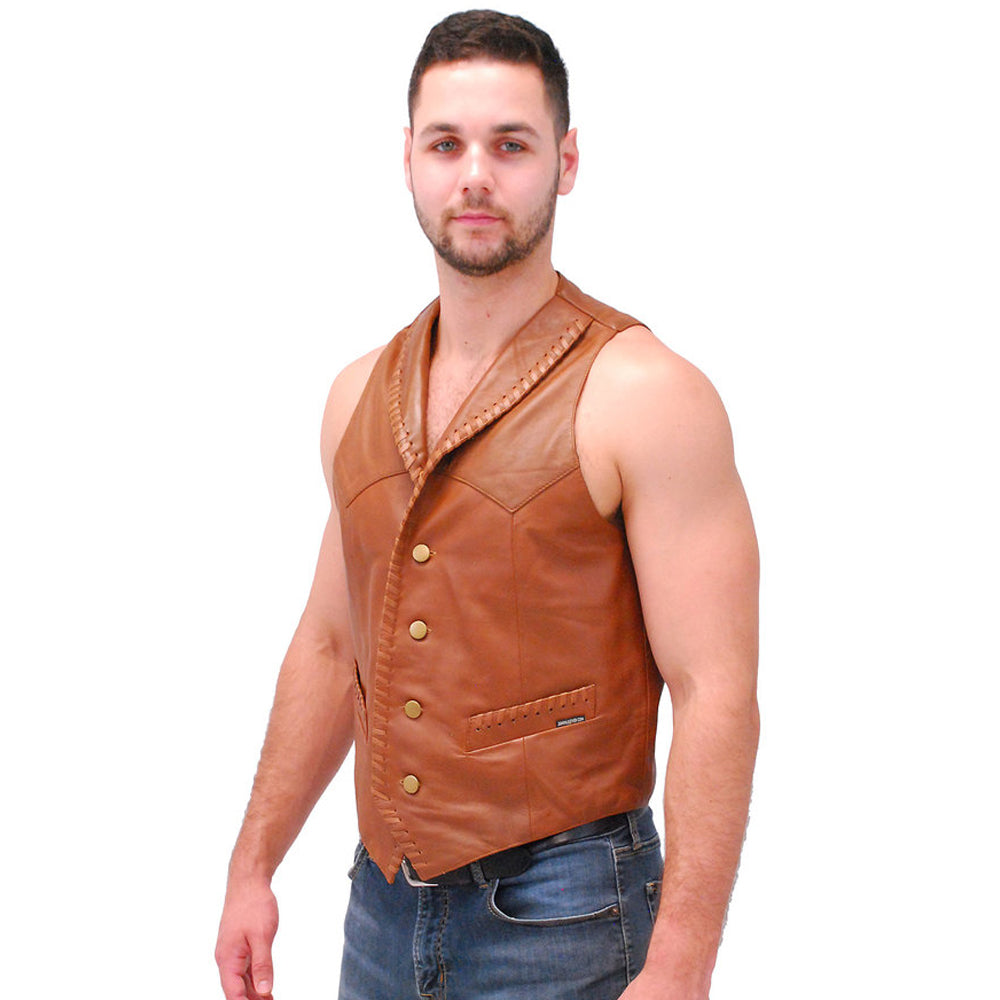Why did cowboys wear leather vests?
Practicality:
Cowboys, spending long hours on the open range, faced various challenges from the elements. Leather vests became a practical choice due to the material's durability and toughness. The rugged nature of their work, which often involved herding cattle and traversing rough landscapes, required clothing that could withstand the wear and tear. Leather, known for its resilience, provided a layer of protection against wind, dust, and abrasions, enhancing the overall practicality of the cowboy's attire.
Functionality:
Leather vests were not just a fashion statement; they served a functional purpose as well. Cowboys needed to have quick and easy access to essential tools and personal items while on the trail. The vests were designed with multiple pockets, providing a convenient and organized solution for carrying small items such as knives, compasses, or even personal keepsakes. This functionality was crucial for the efficiency of their work, allowing cowboys to perform tasks with agility without the need to dig through larger bags or pouches.
Style and Identity:
The cowboy image is deeply ingrained in popular culture, and clothing played a pivotal role in shaping this iconic identity. Leather vests, with their distinct ruggedness, contributed significantly to the overall look associated with cowboys. The choice of leather as a material added a touch of authenticity, reflecting the harshness of the cowboy's environment. This style was not just a matter of practicality but became a symbol of a unique way of life, helping cowboys establish a strong and identifiable presence in the collective imagination.
Protection:
Beyond the practicality of shielding against the elements, leather vests offered an additional layer of protection. Cowboys engaged in activities that exposed them to scratches and minor injuries, particularly when dealing with cattle or navigating through dense vegetation. The leather vest acted as a barrier, reducing the impact of such incidents without compromising the wearer's mobility. This added protection was a crucial aspect of the vest's design, ensuring that cowboys could perform their tasks with a degree of safety in unpredictable and challenging environments.
Tradition and Culture:
The cowboy way of life is deeply embedded in tradition, and clothing choices played a significant role in expressing and preserving this cultural heritage. Leather vests, over time, became an integral part of the cowboy attire, carrying with them a rich history and tradition. The choice of leather was not arbitrary; it was a reflection of the practical needs of the cowboy's lifestyle, merged with a cultural aesthetic that emphasized resilience, self-reliance, and a connection to the land. As a result, the cowboy vest became a symbol, embodying the values and traditions of the cowboy way of life.
Versatility:
One of the remarkable qualities of leather is its versatility. Cowboys, often facing unpredictable weather conditions, benefited from the adaptability of leather vests. In colder temperatures, a well-insulated shearling vest could provide an extra layer of warmth without impeding movement, ensuring comfort during chilly rides or nights around the campfire. Conversely, in warmer weather, cowboys could wear the vest without a jacket, allowing for breathability and flexibility. This versatility made leather vests a practical choice for cowboys working in diverse climates, showcasing the adaptability of both the material and the cowboy's attire.
Symbol of Status:
In the world of cowboys, the quality and design of their clothing, including leather vests, could serve as a symbol of status and craftsmanship. A well-made leather vest not only spoke to the practical skills of the wearer but also demonstrated an attention to detail and a commitment to quality. In some cases, the craftsmanship of the vest could become a marker of a cowboy's expertise and experience. Whether adorned with intricate stitching or displaying expert tailoring, the sheepskin vest became more than a functional garment; it became a statement of the wearer's status within the cowboy community, showcasing their dedication to their craft and their respect for the traditions they upheld.

